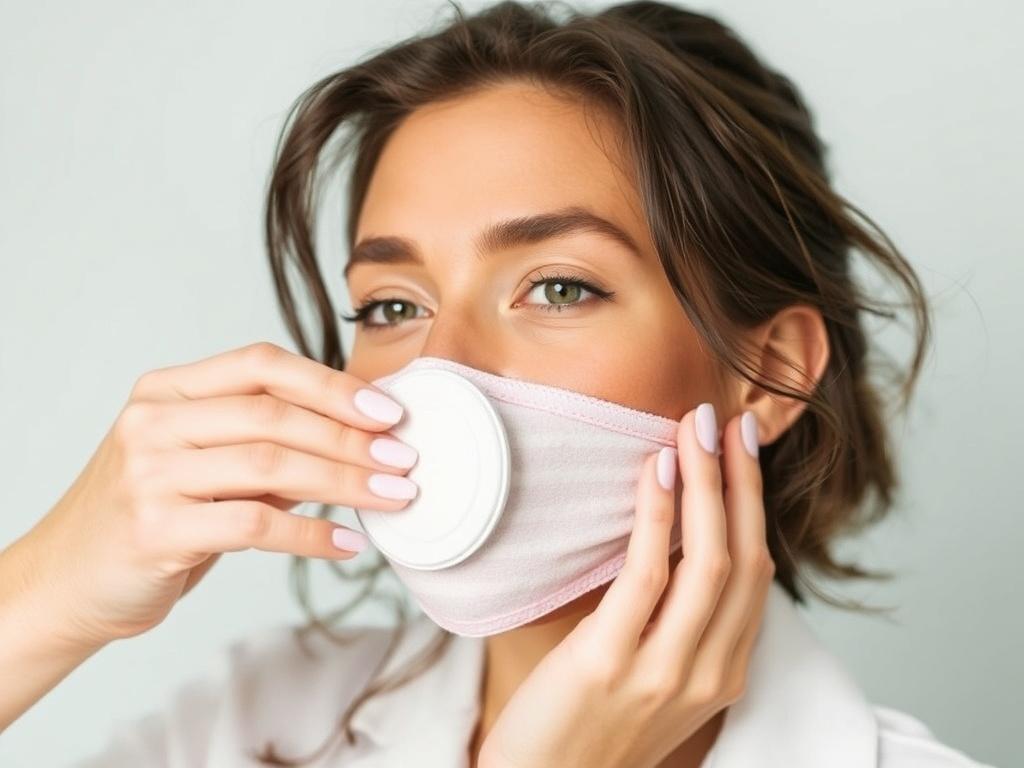Содержание статьи
- 1 Understanding the Limits of DIY Skin Care
- 2 When to See a Dermatologist: Key Signs and Symptoms
- 3 The Benefits of Seeing a Dermatologist
- 4 Common Skin Conditions That Require Dermatologist Intervention
- 5 Steps to Take Before Visiting a Dermatologist
- 6 How to Choose the Right Dermatologist
- 7 Integrating Dermatologist Advice with At-Home Skin Care
- 8 Myths about DIY Skin Care and When They Can Be Harmful
- 9 FAQ: When to See a Dermatologist Instead of DIY
- 10 Final Thoughts: Striking a Balance Between DIY and Professional Care
Taking care of your skin is an essential part of maintaining overall health and confidence. Whether you’re dealing with acne, dryness, or an occasional rash, many of us are tempted to try DIY solutions first. After all, the internet is full of home remedies, over-the-counter products, and beauty hacks promising quick fixes for various skin issues. But when is it truly a good idea to see a dermatologist instead of relying on these do-it-yourself methods? Understanding when to seek professional advice can make all the difference in keeping your skin healthy and avoiding potential complications.
In this article, we’ll explore the key signs and conditions indicating you should consult a dermatologist rather than experimenting with DIY treatments. We’ll also discuss the benefits of professional care and provide practical guidance to help you decide when your skin needs expert attention.
Understanding the Limits of DIY Skin Care
It’s natural to want to solve skin problems at home, and many mild conditions respond well to simple self-care. Cleaning your face gently, using moisturizers, or applying sunscreen regularly are good habits anyone can adopt. However, not every skin concern is suitable for DIY treatment. When symptoms become severe, persistent, or unusual, self-treatment may not only be ineffective but could worsen the issue.
Before diving into the specifics, let’s consider why DIY approaches sometimes fall short. Over-the-counter products and home remedies rarely address the root cause of complex skin disorders. Skin conditions can stem from internal factors such as allergies, infections, autoimmune diseases, or hormonal imbalances that require precise diagnosis and tailored treatment plans.
Common DIY Approaches and Their Limitations
- Home Remedies: Popular options like aloe vera, honey, or turmeric may soothe certain issues but lack scientific backing for more severe problems.
- Over-the-Counter Products: These can help with mild acne or dryness but may irritate sensitive skin when misused.
- Beauty Hacks: Techniques like excessive exfoliation, using lemon juice for brightening, or applying baking soda for cleansing often do more harm than good.
While these DIY methods are tempting, they should be approached cautiously. Recognizing when home treatment is inappropriate is key to preserving skin health.
When to See a Dermatologist: Key Signs and Symptoms
So, how do you know if it’s time to move beyond DIY and book an appointment with a dermatologist? Here are some clear indicators:
1. Persistent or Worsening Skin Conditions
If you have a rash, acne, or eczema that doesn’t improve after a few weeks of home treatment, it’s time to get professional help. Dermatologists can correctly identify the condition and prescribe treatments that address underlying causes rather than just symptoms.
2. Sudden or Unexplained Changes in Skin Appearance
Notice a new mole, a changing mole, or any growth on your skin? These changes require immediate evaluation to rule out skin cancer or other serious diseases. DIY approaches cannot diagnose or treat these potentially dangerous conditions.
3. Severe Itching, Pain, or Discomfort
If your skin condition causes significant discomfort or interferes with your daily life, seeking a dermatologist’s advice is crucial. Severe itching or pain might indicate infections or inflammatory skin disorders needing prescription medication.
4. Signs of Infection
Swelling, increased redness, warmth, pus, or oozing from a skin lesion suggest an infection. Infections can spread rapidly and require antibiotics or other specialized treatments that DIY methods can’t provide.
5. Hair Loss or Nail Changes
Sudden hair thinning or changes in your nails could indicate dermatological or systemic problems. A dermatologist can evaluate these signs and recommend appropriate therapy.
6. Chronic Skin Conditions
Conditions like psoriasis, rosacea, or severe acne often require ongoing management with prescription medications and tailored care plans, beyond what DIY treatments can offer.
7. Cosmetic Concerns That Impact Your Confidence
If certain skin issues are affecting your self-esteem and quality of life, dermatologists can provide effective cosmetic procedures and therapies to help you feel your best.
The Benefits of Seeing a Dermatologist

Opting for professional care has many advantages. Here’s a helpful table summarizing the benefits of consulting a dermatologist versus using DIY methods:
| Aspect | Dermatologist Care | DIY Approach |
|---|---|---|
| Diagnosis | Accurate through examination, biopsy, and tests | Often guesswork, risking misdiagnosis |
| Treatment | Prescription medications and customized plans | Generic remedies, may be ineffective or harmful |
| Monitoring | Ongoing follow-up for chronic or severe conditions | No monitoring or adjustment of treatment plan |
| Safety | Professional supervision reduces side effects | Potential for irritation, allergic reactions, and worsening |
| Cosmetic Expertise | Access to advanced treatments like lasers and fillers | Limited options and unsure results |
Professional dermatologists bring years of training and experience, ensuring your skin receives the best care possible. Moreover, many skin issues can have implications beyond the surface, connecting to broader health conditions that a dermatologist can detect early on. They also stay updated with the latest research and technologies, offering cutting-edge solutions that DIY methods simply can’t match.
Common Skin Conditions That Require Dermatologist Intervention
Understanding which specific conditions warrant professional evaluation can guide your decisions. The following list highlights some common skin problems where seeing a dermatologist is advisable:
- Severe or cystic acne: May require prescription antibiotics, retinoids, or hormonal treatments.
- Psoriasis: Chronic autoimmune condition needing specialized management.
- Rosacea: Often mistaken for generic redness but requires medical treatment.
- Skin infections: Bacterial, fungal, or viral infections that need targeted therapy.
- Skin cancer: Early detection and treatment are critical for melanoma and other cancers.
- Eczema (atopic dermatitis): Persistent outbreaks benefit from prescription creams.
- Unusual moles or lesions: Should be biopsied or monitored professionally.
- Hair disorders: Alopecia or scalp conditions need specialized care.
Attempting to treat these complex issues with DIY remedies often leads to frustration and potential harm, underscoring the importance of professional guidance.
Steps to Take Before Visiting a Dermatologist
Preparing for your visit can help make the consultation productive and efficient. Here are some steps to consider:
- Document your symptoms: Note when they began, their pattern, and any changes over time.
- List your current skin care products: Include anything topical or oral that might influence your condition.
- Take photos: Clear images of affected areas can help in diagnosis, especially for fluctuating conditions.
- Write down questions and concerns: It’s easy to forget in the appointment—having notes ensures you cover everything.
- Check your insurance coverage and referral requirements: This ensures the visit goes smoothly without unexpected costs.
How to Choose the Right Dermatologist
0
Finding a trusted dermatologist is important for receiving quality care. Here are some tips:
- Look for board-certified dermatologists with good patient reviews.
- Consider specialists if you have particular concerns (e.g., pediatric dermatology or cosmetic dermatology).
- Check if they participate in your insurance plan.
- Ask for recommendations from your primary care physician, family, or friends.
- Assess the clinic location, appointment availability, and communication style.
Building a long-term relationship with a dermatologist can be invaluable as they understand your unique skin history and can guide ongoing care.
Integrating Dermatologist Advice with At-Home Skin Care
Seeing a dermatologist doesn’t mean giving up control over your skin. In fact, many professional treatments work best when combined with good home care. Your dermatologist will often provide specific recommendations tailored to your skin type and condition, such as:
- Gentle cleansers and moisturizing routines
- Sun protection strategies
- Safe exfoliation schedules
- Diet and lifestyle advice impacting your skin
- Prescription products with usage instructions
By following these guidelines alongside your dermatologist’s treatments, you can achieve healthier, glowing skin and prevent future problems. The goal is to empower you with knowledge and tools that complement professional interventions.
Myths about DIY Skin Care and When They Can Be Harmful

The internet is rife with myths about quick natural cures for all skin issues. While some natural ingredients have mild benefits, many DIY tips can be misleading or outright harmful. Here are a few common myths debunked:
- Lemon juice will clear acne: Lemon juice is highly acidic and can cause burns or worsen sensitivity.
- Baking soda is a great exfoliant: It disrupts your skin’s natural pH, leading to dryness and irritation.
- More exfoliation means better skin: Over-exfoliating damages your skin barrier and can trigger breakouts or redness.
- Natural always means safe: Plants can cause allergic reactions or interact poorly with medications.
Understanding these myths helps you avoid common pitfalls and recognize when professional advice is needed.
FAQ: When to See a Dermatologist Instead of DIY
| Question | Answer |
|---|---|
| Can all skin problems be treated at home? | No. Mild issues can sometimes improve with home care, but persistent, painful, or changing symptoms require professional evaluation. |
| How long should I try DIY remedies before seeing a dermatologist? | If there is no improvement within 2 to 4 weeks, or worsening symptoms, consult a dermatologist promptly. |
| Are dermatologist visits expensive? | Costs vary. Check your insurance and discuss payment options with the clinic. Many offer affordable options for necessary care. |
| Can dermatologists assist with cosmetic concerns? | Yes. They offer treatments for acne scars, pigmentation, wrinkles, and other aesthetic issues. |
| Is it safe to combine dermatologist-prescribed treatments with DIY products? | Always inform your dermatologist about all products you use to avoid conflicts or interactions. |
Final Thoughts: Striking a Balance Between DIY and Professional Care
Taking good care of your skin is a journey that involves self-awareness, education, and occasional professional guidance. DIY methods can be effective for simple, minor issues or for maintaining healthy skin, but they are no substitute for expert diagnosis and treatment when things get serious. Remember, your skin is not just your body’s largest organ; it’s also a reflection of your overall health. Knowing when to see a dermatologist instead of relying solely on DIY solutions ensures you get the care you deserve and avoid unnecessary harm.
Conclusion
In summary, understanding when to see a dermatologist instead of engaging in DIY skin care is vital for maintaining healthy skin and preventing complications. Persistent, painful, or unusual skin symptoms, sudden changes in moles, signs of infection, and chronic conditions are clear signals to seek professional help. Dermatologists offer accurate diagnosis, tailored treatments, and ongoing support that DIY remedies cannot match. While home skin care routines remain important, especially for prevention and maintenance, they should complement—not replace—the expertise of seasoned skin care professionals. By respecting the limits of at-home treatments and recognizing the benefits of dermatological care, you set yourself on the path towards healthier, happier skin for the long term.

